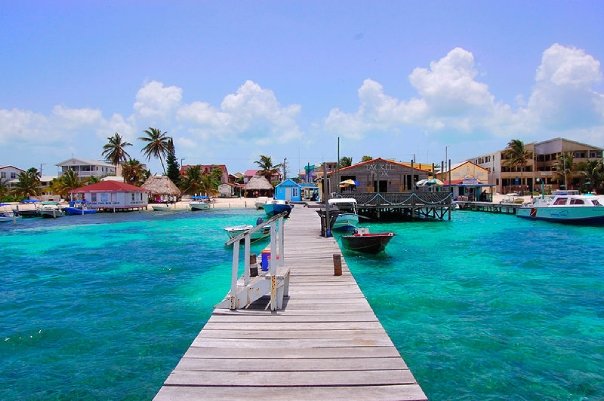The American Crocodile
The American Crocodile is found primarily in Central America (including Belize). It is the most widespread of the four species of crocodiles from the Americas.Like all crocodiles, the American crocodile has four short, splayed legs, a long & powerful tail, a scaly hide with rows running down its back and tail. It's snout is elongated and includes a strong pair of jaws. Their eyes have membranes for protection and also glands, that produce tears.
The nostrils, eyes and ears are situated on the top of its head, this way the rest of the body can be concealed underwater for surprise attacks. camouflage also helps them prey on food. American crocodiles normally crawl on their belly, but they can also "walk high". Larger specimens can gallop up to 10 miles per hour. They can swim at as much as 20 miles per hour by moving their body and tail in a twisting fashion, but they cannot sustain this speed.
American crocodiles are more susceptible to cold than American alligators. Unlike the American alligator which can survive in waters of 7.2 °C (45.0 °F) for some time, an American crocodile would become helpless and drown. It is thought that this intolerance to cold is the reason why American crocodiles never spread as far northward as the alligators. American crocodiles; however, have a faster growth rate than alligators, and are much more tolerant of salt water.
Unlike the Old World crocodiles which are sometimes cleared of parasites by birds, the American crocodile relies more on fish for parasite removal.
Newborn hatchlings are about 8.7 inches in size and weighs about 2 ounces. The average adult is 13 feet long and weighs 840 pounds in males, and 9.8 feet long with a weight of 380 pounds in females.
The American crocodile prey can range in size from the insects taken by young crocodiles to cattle taken by large adults and includes birds, mammals, fish, turtles, crabs, snails, frogs, and occasionally carrion. Full grown adult males have no natural predators and are capable of preying on virtually any animal unfortunate enough to be at the water's edge, although even at immense sizes fish still makes up the vast majority of the crocodile's diet.
It inhabits waters such as mangrove swamps, river mouths, fresh waters, and salt lakes and can even be found at sea.
American crocodiles can be dangerous to humans.





No comments:
Post a Comment